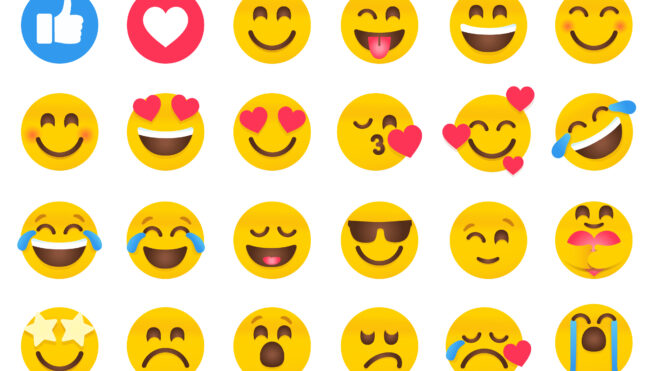
Smartphones and apps are part of daily life for most of us. Even before children get cellphones, they’re exposed to the internet in countless ways — most often by seeing their parents, older siblings, or friends use social media. When your child gets to a certain age, they’re going to start asking if they can use social media, and you’ll have to weigh the pros and cons.
If you want to allow your children to use these platforms safely, here are some tips for introducing them to social media at the right age.
More from CafeMom: 15 Rules All Parents Should Set When Their Kid Gets a Phone
Age Limits
All social media platforms have age restrictions to ensure children aren’t exposed to inappropriate content. Across the major platforms, the minimum age for users is 13 years old. This goes for Facebook, Instagram, X (formerly Twitter), TikTok, and Snapchat.
While 13-year-olds can technically join these sites, that doesn’t mean they’re truly “old enough” to navigate the world of social media. Social media often exposes children to societal pressures and cyberbullying, as well as mature content.
As a parent, you have to decide if your child can handle the risks, which could include seeing friends post pictures at a party your child wasn’t invited to or receiving mean comments from internet trolls.
More from CafeMom: I Posed as a Teen Girl on TikTok & Within Minutes Was Shown Disturbing Content on My FYP
Benefits of Holding Off

The American Psychological Association states that social media is neither beneficial nor harmful on its own. The effects on a child depend on what they see or who they meet online. However, research from Developmental Psychology found that social media primarily caused depressive symptoms and lower life satisfaction in participants around the age of 13.
Your child may avoid these mental health experiences by remaining off the internet until they’re a little older. In the meantime, they can do things like attend summer camps to reduce their risk of depression, play with friends, or join hobby groups. They’ll make the same social connections without risking their mental well-being.
Expert Recommendations
The final call will always fall to parents, but the American Academy of Pediatrics recommends working with your child to teach them about social media as they grow up. Instead of letting them have their first exposure in their teen years with little to no training, you can teach them the social understanding and media literacy they’ll need to maintain their mental health.
Show them occasional age-appropriate posts to explain why they’re helpful or what makes them hurtful. Explain why someone would post a mean comment and how it doesn’t mean the comment is true. These tiny lessons give your children the skills they’ll need to eventually have unsupervised internet usage and protect themselves.
Simultaneously, the APA advises parents not to let their children access social media alone until their teen years. If they get online by themselves around or before age 10, social media may exploit their brain’s need for peer approval and inability to manage their time. If your child has access to a computer or tablet at home, be sure to block social media websites before letting them go online.
Posting pictures of your children before they’re old enough to be online could influence them as well. It reveals information about them strangers can utilize when your kids start social media accounts.
Use Parental Controls

Each social media platform has parental controls you can use when you’re ready to let your child explore the internet. Meta, the company that owns Facebook and Instagram, has an educational hub where parents can learn about control settings like getting notifications when their child follows someone or setting a timer to limit their online usage.
X, formerly known as Twitter, also has parental controls. The Privacy settings page shows who your child follows or blocks. It’s also possible to limit who sees your child’s posts to prevent strangers from finding or contacting them. Their accounts should always be set to private, so they have to “accept” a follow request to allow anyone to see their profile.
If the settings menus seem overwhelming, you can also explore productivity apps. They block social media apps on the same phone when the user’s allotted screen time runs out. Consider options like AppBlock or Flipd, which are available for iOS and Android users.
Here are some more quick rules to put in place:
- Only accept friends or follow requests from people you personally know.
- Do not friend anyone over age 18, except for family members.
- Turn off comments or “like” counts on your posts. Instagram, for example, allows you to hide the number of likes posts get to avoid harmful comparison. Turning off comments can help prevent cyberbullying.
- Do not click any links sent to you in direct messages, and do not respond to direct messages from people you don’t know.
- Don’t use social media at school.
- Have designated no-phone times at home, like dinner time or family game nights.
- If you see anything that makes you feel uncomfortable, tell one of your parents.
Try to create a judgment-free attitude so your children will feel comfortable coming to you with questions or concerns. If they break a rule and come to you for help, listen and provide guidance before punishment. Strict rules or fear of punishment can often lead kids to use social media in secret and without permission.
Make a Plan
Children and teens eventually find their way onto social media sites, but they don’t have to experience them unprepared. Use these tips to introduce your kids to social media when they’re old enough.
You could try using parental control settings or app blockers to monitor and limit their activity. Walk them through posts you see on your feed so they learn how social media can benefit or hurt users, depending on how they utilize the platforms. Your kids will have an easier time online and potentially avoid the negative effects of social media because you spent time preparing them with a gradual introduction.







